Zodiacal Light, Winter Milky Way, Galaxies,
Thor's Helmet
Posted: 27 January 2019
Thursday night, 24 January 2019, was partly cloudy. Friday morning, 25 January, dawned clear but clouds began arriving before sunset. Saturday, 26 January, also dawned clear with a clear sky forecast for the night.
On Saturday I had a local contractor come to the observatory to look at the POD Zenith Table (PZT). The PZT surface needs to be refinished; the four coats of varnish I applied when I made the PZT in April 2016 has deteriorated to the point that I need to do something with it. I am now waiting for his proposed solution and quote. Here's a photo of the top surface, with the waning Moon in the sky.
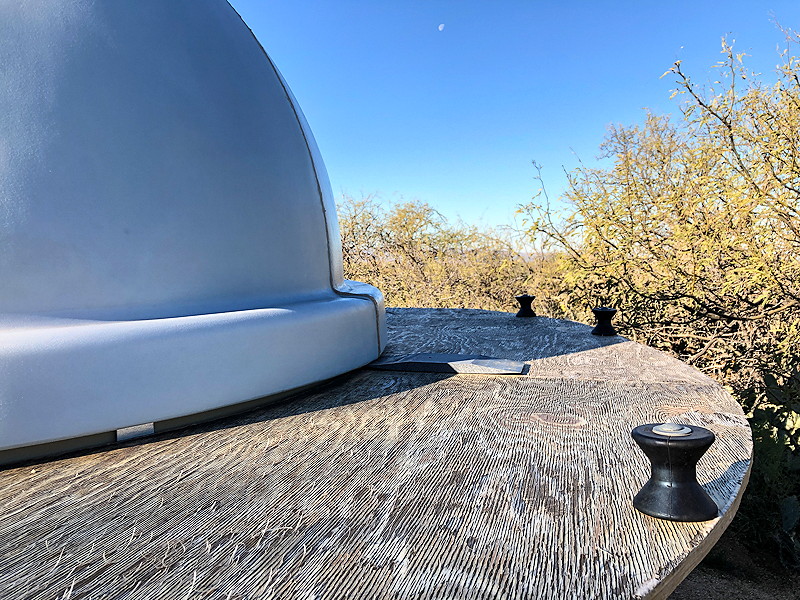
|
Open: Saturday, 26 January 2019, 1753 MST Temperature: 69°F |
Session: 1329 Conditions: Mostly clear |
Equipment Used:
12" f/8 LX600 w/StarLock
2" 24mm UWA eyepiece
Camera:
D850 DSLR
First, I set up the D850 DSLR with the 24-70mm lens on a camera tripod for sky imaging.
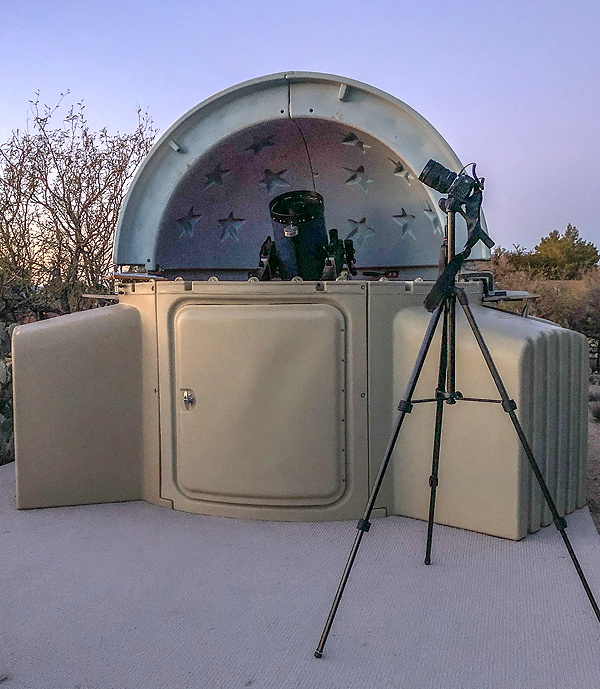
1810 MST: LX600 ON, StarLock OFF, High Precision OFF.
1816 MST: viewed the planet Mars, 102X.
Then began waiting for the end of Astronomical Twilight (1916 MST).
1848 MST: the Zodiacal Light was becoming visible in the western sky.
1900 MST: I moved the camera to the other side of the observatory. 1919 MST: Zodical Light (f/2.8, 15 seconds, ISO 2500, White Balance Auto, FL 24mm):
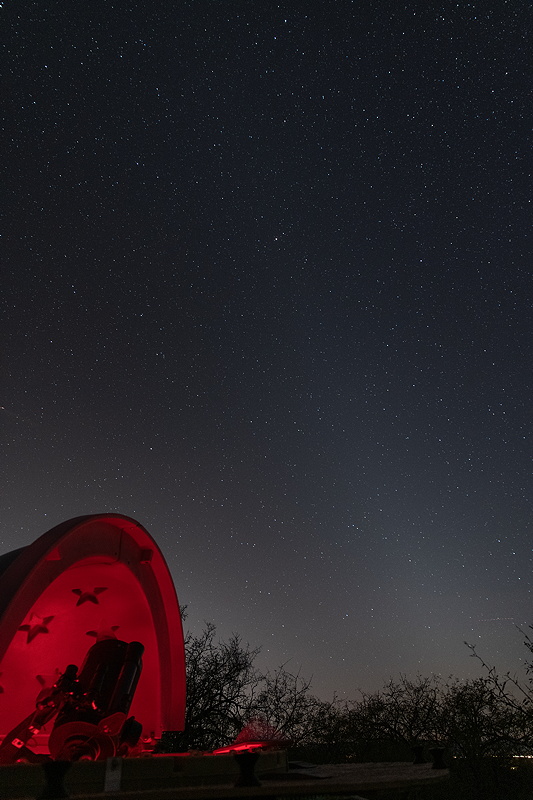
Mouseover or tap on image for labels
1930 MST: It was getting breezy. I moved the camera back to the observatory patio. 1932 MST: took this photo of the Winter Milky Way passing between the constellations of Gemini (left) and Orion (right) with the star Sirius at the bottom right (f/2.8, 15 seconds, ISO 2500, WB 5000K, FL 24mm):
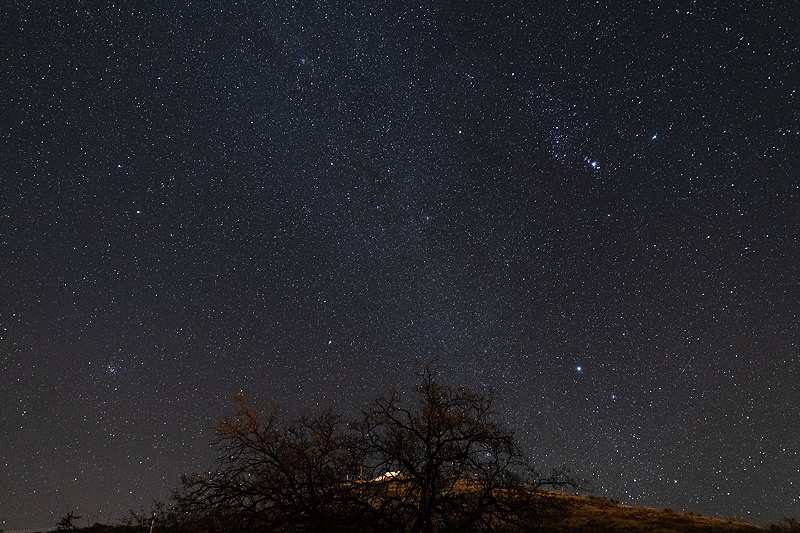
1936 MST: done with sky imaging. Returned to the 12" telescope.
1938 MST: High Precision ON.
Viewed the galaxy NGC1023, 102X. Nice view. Mounted the D850 DSLR at prime focus, focused on the star Pollux, and locked the primary mirror.
2006 MST: StarLock ON.
Took these images for my Extragalactic Supernova Project, StarLock autoguided, 5 minutes, ISO 6400, WB 5000K.
NGC1023
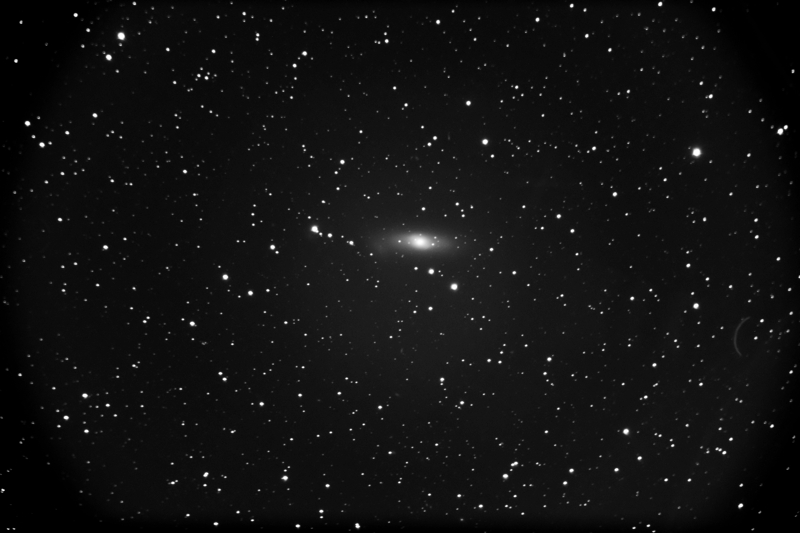
NGC1042
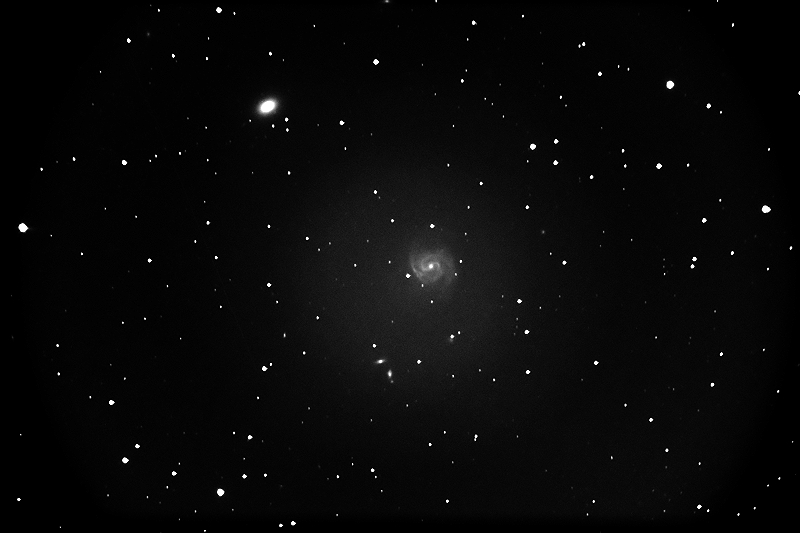
NGC1055
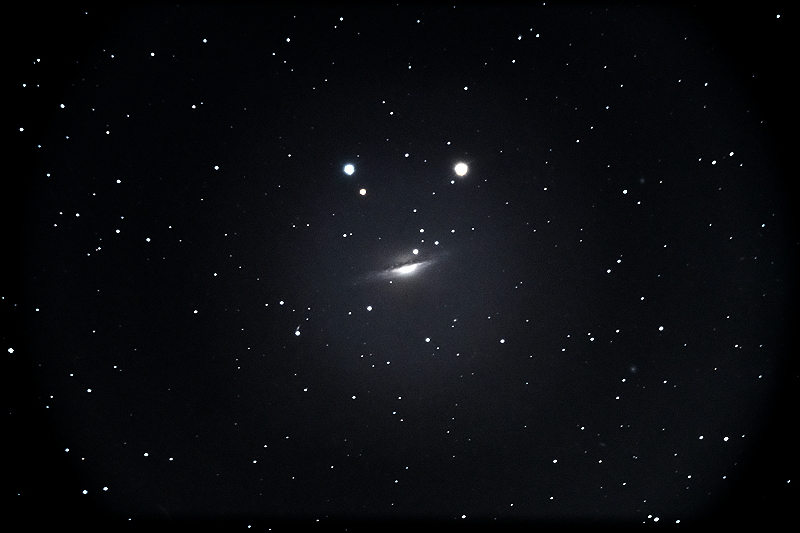
Seeing and autoguiding began getting worse while imaging the galaxies, which made getting 5 minute exposures challenging.
Slewed to NGC2359 (Thor's Helmet, nebula) and began imaging it, StarLock autoguided, ISO 6400, WB 4000K. The longest exposure I could get was 161 seconds. This is that (cropped) image:
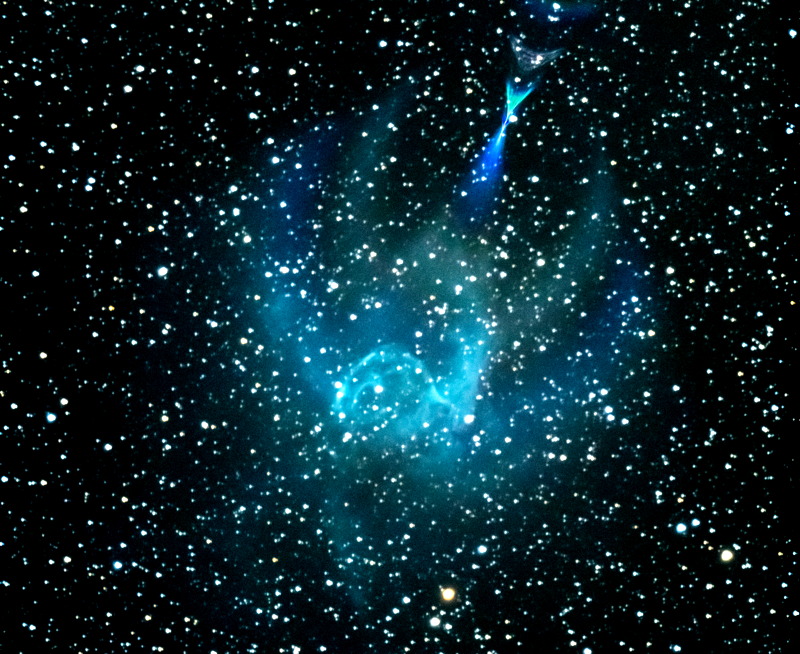
The photo captured a "lens flare" from a bright star outside of the field-of-view, which made the photo even more interesting. I will re-take the image on a future session, hopefully without the lens flare.
As seeing was so bad I ended imaging for this session.
2121 MST: StarLock OFF, High Precision OFF.
Viewed NGC2359 (Thor's Helmet), 102X. The helmet shape was obvious.
2133 MST: LX600 OFF.
|
Close: Saturday, 26 January 2019, 2142 MST Temperature: 48°F |
Session Length: 3h 49m Conditions: Clear, breezy |
Comments are welcome using Email. Twitter users can use the button below to tweet this report to their followers. Thanks.
Cassiopeia Observatory Home Page
Copyright ©2019 Michael L. Weasner / mweasner@me.com
URL = http://www.weasner.com/co/Reports/2019/01/27/index.html
